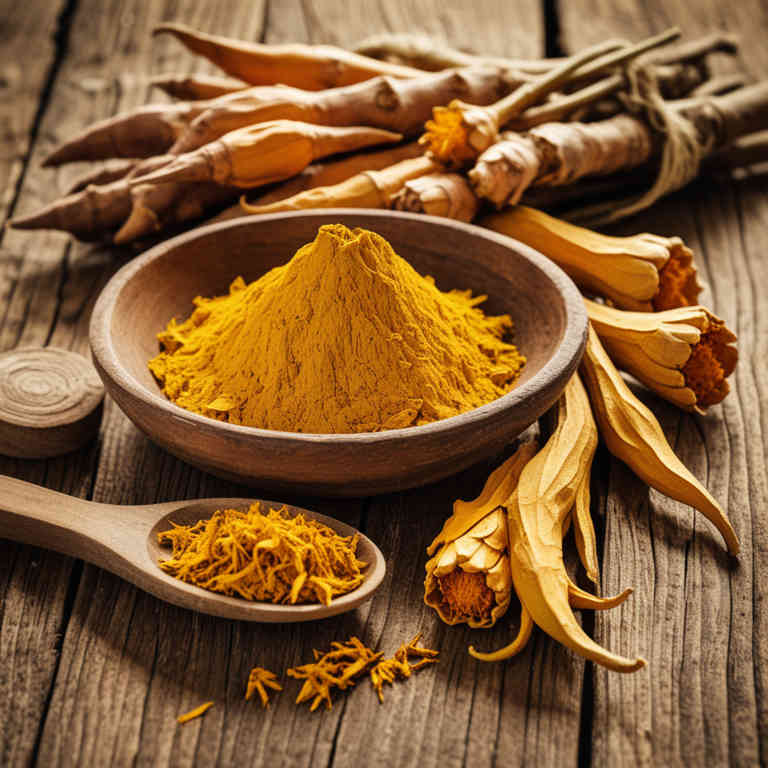Curcuma longa mucillage for medicinal use

Curcuma longa mucillage is a preparation derived from the rhizome of the turmeric plant, Curcuma longa, through a process that extracts its mucilage, a gel-like substance.
This mucilage contains various bioactive compounds, including curcuminoids, which are known for their anti-inflammatory and antioxidant properties. In herbalism, it is used to support digestive health, reduce inflammation, and promote overall wellness. It may also be applied topically to soothe skin irritations and aid in wound healing.
Its mild nature makes it suitable for long-term use in supportive herbal therapies.
Uses
Curcuma longa mucillage has been used to treat digestive disorders and inflammation for centuries in traditional medicine systems such as Ayurveda and Chinese medicine.
Historically, it was valued for its soothing properties and was often used to alleviate gastrointestinal discomfort and reduce inflammation in the body. In modern applications, scientific research has explored its potential as a natural anti-inflammatory and antioxidant agent, supporting its use in managing conditions like arthritis and inflammatory bowel disease. The mucilage, derived from the rhizomes of the turmeric plant, is believed to coat and protect mucous membranes, enhancing its therapeutic value.
Today, it is increasingly incorporated into herbal remedies and dietary supplements for its holistic health benefits.
Benefits
Curcuma longa mucillage has health benefits such as anti-inflammatory, antioxidant, and digestive support properties.
This preparation, derived from the rhizomes of the turmeric plant, contains mucilage, which can soothe the gastrointestinal tract and aid in digestion. Its anti-inflammatory effects may help reduce inflammation in conditions like arthritis or inflammatory bowel disease. The antioxidant properties of curcuma longa mucillage may protect cells from oxidative stress and support immune function.
Additionally, it may promote skin health and assist in detoxification processes within the body.
Constituents
Curcuma longa mucillage active constituents include curcuminoids, such as curcumin, demethoxycurcumin, and bisdemethoxycurcumin, as well as volatile oils, turmerone, and a range of phenolic compounds.
These bioactive components contribute to the preparation's anti-inflammatory, antioxidant, and antimicrobial properties. Curcuminoids are primarily responsible for the therapeutic effects, including their ability to modulate inflammatory pathways and support digestive health. The mucilage content also provides soothing and protective effects on the gastrointestinal tract.
Overall, this herbal preparation is valued for its potential to support overall wellness and address various health concerns.
Preparation
To make Curcuma longa mucillage, begin by obtaining fresh or dried rhizomes of turmeric (Curcuma longa).
Wash and slice the rhizomes into thin pieces, then soak them in water for several hours or overnight to allow the mucilage to dissolve. After soaking, strain the mixture through a fine mesh or cheesecloth to separate the mucilage from the solid particles. The resulting mucilage can be used as a natural thickening agent or added to herbal formulations.
This preparation is valued for its soothing properties and is often used in traditional medicine for its anti-inflammatory and healing benefits.
Side Effects
Curcuma longa mucillage may lead to gastrointestinal discomfort, including nausea, diarrhea, and stomach cramps, due to its high mucilage content.
It can also cause allergic reactions in individuals sensitive to turmeric or related plants. Prolonged use may interfere with blood clotting and increase the risk of bleeding, especially when combined with anticoagulant medications. Some studies suggest it may affect liver function, though more research is needed to confirm these effects.
It is important to consult a healthcare provider before using this preparation, especially for those with pre-existing medical conditions or on medication.